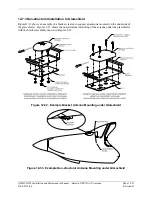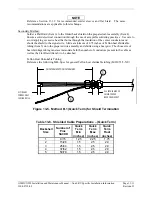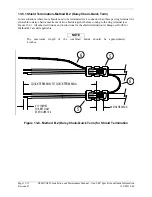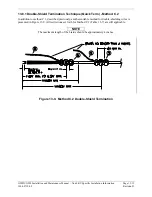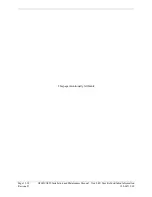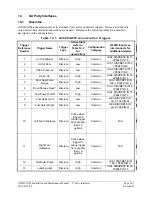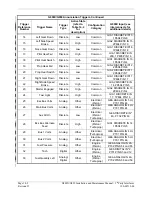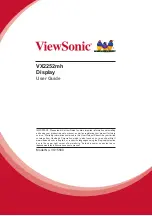
Page 13-10
G900X/G950 Installation and Maintenance Manual – Non LRU Specific Installation Information
Revision D
190-00719-00
13.4.1 Shield Termination – Method B.1 (Quick Term)
If desired, the drain wire termination (Item 5) and the floating shield termination (Item 7) can be
effectively combined into a “Quick Term”. This method eliminates the float in the cable insulation and
moves the placement of the window which was described by the dimensions “Window Min” and
“Window Max” from Method A. This technique is depicted in Figure 13-7.
NOTE
The original purpose for separating the shield drain termination (Item 5) from the float
termination (Item 7) in Method A was to allow for a variety of lengths for the drain wires
so that the shield drain terminations (Item 5) would not all “bunch up” in the harness and
to eliminate loops in the drain wires. If Method B is chosen, as described in this section,
care must be taken to insure that all drain shield terminations can still be inspected. With
connectors which require a large number of shield terminations it may be best to use
Method A. This will allow the drain shield terminations (Item 5) a larger area to be
dispersed across.
Instructions for Method B (Quick Term)
Using this method, the instructions from Method A are followed except that:
1) Step 2 is eliminated
2) Steps 3 and 4 are replaced by the following:
At the end of the shielded cable (item 4), strip “Quick Term Min” to “Quick Term Max” (Table 4-1)
length of the jacket to expose the shield. Next trim the shield so that at most 0.35 inches remains
extending beyond the insulating jacket. Fold this remaining shield back over the jacket.
Connect a Flat Braid (Item 6) to the folded back shield of the prepared cable assembly. The flat braid
should go out the front of the termination towards the connector. It is not permitted to exit the rear of the
termination and loop back towards the connector. (See Figure 4-1). Make this connection using an
approved shield termination technique.
NOTE
FAA AC 43.13-1B Chapter 11, Section 8 (Wiring Installation Inspection Requirements)
may be a helpful reference for termination techniques.
Preferred Method:
Slide a solder sleeve (item 5) onto the prepared cable assembly (item 4) and connect the Flat
Braid (Item 6) to the shield using a heat gun approved for use with solder sleeves. It may prove
beneficial to use a solder sleeve with a pre-installed Flat Braid versus having to cut a length of
Flat Braid to be used. The chosen size of solder sleeve must accommodate both the number of
conductors present in the cable and the Flat Braid (item 6) to be attached.


